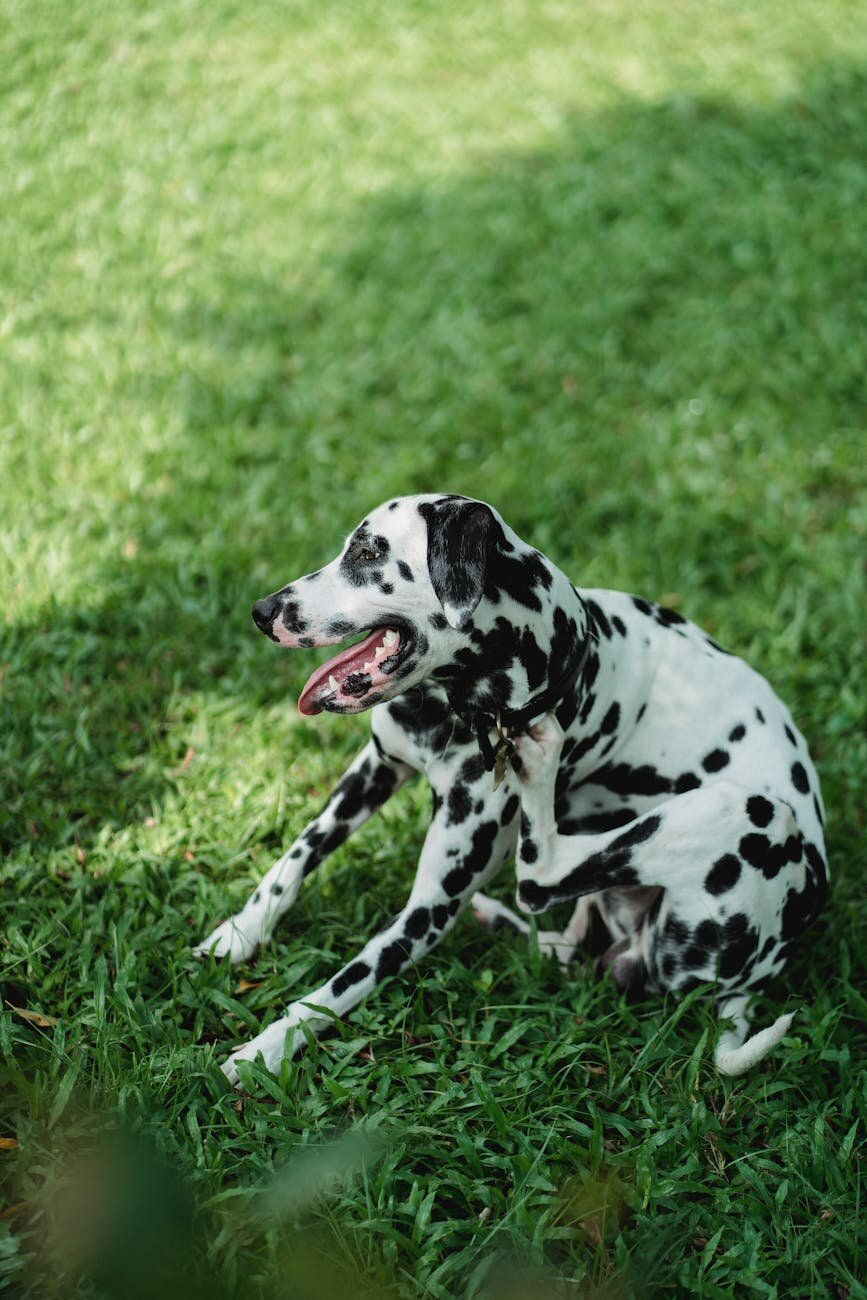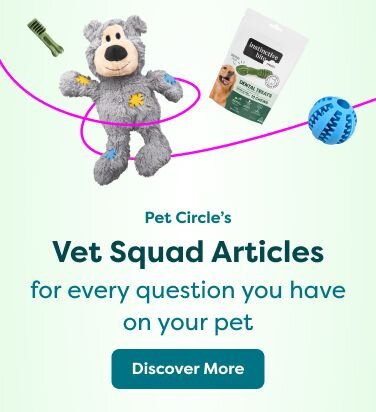Last Updated: 06/11/2025
Does Your Dog Have A Food Allergy
Does your dog have a food allergy? Find out more about food trials hypoallergenic dog food and novel protein diets our vets recommend.
Author: Dr Belinda Stancombe BVSc (Hons)
Reading Time: 4 minutes - short read
Are you suspicious that your pet may have a food allergy? Food allergies are responsible for approximately 10% of allergy cases in dogs, ranked third after flea allergy and atopic dermatitis (airborne allergies) - although food allergies are a little more common in cats.
Strictly speaking, we should call food allergies an adverse food reaction, because it occurs when the immune system reacts to a particular pet food ingredient. The incriminating component of the food is usually the protein source - for example chicken, beef, soy, or dairy. These proteins usually resist the heat of cooking, stomach acids, and intestinal digestive enzymes, and make their way to the bloodstream and target organs where they can cause an allergic reaction. Most pets that develop food allergies, do so over a period of months or years of being exposed to a particular food.
For more info on itchy skin management, check out our articles How to Stop Your Dog Scratching, The Best Dog Food For Skin Allergies, and The Causes of Itching in Cats.
Signs of a Food Allergy

- Pruritus (severe itching of the skin): Typically we see scratching of the tummy, armpit, groin, muzzle, around the eyes and the webbing between the toes, but it can occur anywhere on the body
- Gastrointestinal Signs: 50% of dogs show signs such as vomiting, diarrhoea, flatulence and colitis
- Ear Infections: 50 - 80% of dogs develop recurrent ear infections
Pets with adverse food reactions will display these signs all year round, unlike other causes of itchy skin such as environmental allergens which may flare up during spring.
Pets of any age can develop adverse food reactions however, it's more common in puppies and young adults and we usually see signs before 3 years of age.
How are Food allergies Diagnosed?
If your pet has itchy skin due to allergies, it can be difficult to determine the underlying cause. Flea Allergy Dermatitis (FAD) is the most common cause of itchiness in dogs and cats, so it is important to rule this out first when investigating any potential allergies. Make sure your pets flea prevention is up to date with a regular preventative such as Nexgard Spectra or Bravecto.
If your pet is still itchy and fleas are no longer part of the equation, your best bet is to consult your veterinarian for further advice. They may recommend a dietary trial.
Our Top Recommended Flea Products
What is a Dietary Trial?
A 'dietary trial' or an 'elimination diet' is used as part of the diagnostic process to pinpoint which allergen your pet is allergic to.
The 3 Options For A Dietary Trial
- A Novel ("new") Protein Diet
- A Hydrolysed Diet - these are prescription/veterinary diets which can only be recommended by your veterinarian
- Home-cooked diet
The chosen diet must be fed exclusively for a minimum of 6 weeks, with absolutely no treats or tidbits as this may affect results. All other flavoured tablets (e.g. heartworm prophylaxis), flavoured antibiotics and vitamins, toothpastes, pigs ears and rawhides must be excluded. (Every family member should be aware of how important this is!)
If the symptoms improve after 4-6 weeks on the dietary trial, you can assume a food reaction was responsible for your pet's symptoms. You can then introduce one ingredient per week (for example, try chicken the first week, then beef the next week, etc) and observe for a reaction. This allows you to pinpoint what your pet may be allergic to.
In reality, if the symptoms have resolved with the new diet, it may be fed long-term, as long as it is complete and balanced.
So which diet do we choose? While there are advantages and disadvantages to each, the most important factors to initially consider are: What am I currently feeding and what is the protein source? And what other treats or table scraps am I feeding? This will then allow selection of a truly novel protein source.
A Novel Protein Diet
What is it? A diet containing a new protein source that hasn't been fed before, such as venison, rabbit, or seafood. Pros: Commercially available, highly palatable, easy to use, affordable Cons: Choices have become more limited due to expansion of pet food industry; protein sources that were once "unusual" are now more common Examples: Instinctive Bite Single Protein Kangaroo, Open Farm Grain Free Salmon, Prime Air Dried Duck and K9 Natural Lamb Feast
A Hydrolysed diet
What is it? A diet in which the protein source is broken down into smaller molecules that are less likely to trigger an allergic response. Pros Commercially available - however must be prescribed by a veterinarian. Avoids pet food additives that might have the potential to cause an adverse reaction. Cons: More expensive, reduced palatability, and a lack of evidence documenting whether dogs allergic to the parent protein will actually tolerate a hydrolysed product. Examples: Hill's Prescription Z/d, Royal Canin Hypoallergenic, Royal Canin Anallergenic, Royal Canin Sensitivity Control
Home-Cooked Diet
What Is it? A diet prepared at home with a novel protein and carbohydrate source. Pros: Can be prepared affordably depending on the recipe. Cons: Contraindicated in growing animals due to risk of skeletal and organ pathology if incorrectly formulated or balanced, not recommended in cats, not recommended for long-term feeding Examples: Usually consists of 1 protein and 1 carbohydrate source e.g. Salmon and potatoes. For a balanced recipe, we recommend consulting with a veterinary nutritionist.
Shop Novel Protein Diets for Dogs
Hypoallergenic Diets
A hypoallergenic diet is a diet that doesn't trigger an immunological reaction in the animal consuming the food. The gold standard hypoallergenic diet is one that has been formulated under pharmaceutical grade conditions. This means that the manufacturer has undertaken extra processing steps to eliminate contamination with other protein sources. This is done through rigorous cleaning of all production equipment followed by testing of the equipment for traces of proteins before production begins.
These diets also typically include protein that has undergone a process called 'hydrolysation' - this is where the protein structure is broken down into its component amino acids. Hydrolysation is a process that reduces the 'allergenicity' of the protein, making it so small that it's unlikely to trigger an immune reaction. Diets that fall into this category are prescription and veterinary dog food and can therefore only be recommended by your veterinarian.
Read more about : Hypoallergenic Dog Food
Hypoallergenic Dog Food
True food allergies are driven by the immune system targeting a specific protein source in your pet's diet, often after prolonged exposure. While they represent a smaller percentage of allergies compared to those caused by fleas or environmental factors, they can be intensely frustrating for both you and your pet.
The most effective diagnostic tool, the elimination diet trial, is crucial for diagnosing a food allergy and this should be done with advice from your treating vet.
Articles recommended for you
Our vet authored guide to the benefits of feeding your dog fresh food plus tips and advice for introducing it into their regular menu.
See our guide to protecting your pet from parasites from our vet team.
Thinking of getting a fish? Check out our guide for setting up a tank and home care tips!
Looking to understand horse feeds better? This comprehensive guide covers feeding recommendations for horses of all ages and disciplines.
Does your pet suffer from anxiety? Check out our Vet-guide for treatment options to help your pet.
History
Our experts continually monitor the health and wellness space and we update our articles when new information becomes available.
Thur Oct 30 2025
Edited by Dr Angie Armstrong BVScDr Belinda Stancombe BVSc (Hons)
Veterinarian
Dr Belinda graduated from The University of Queensland in 2009 and has worked as a Small Animal Veterinarian for over 10 years in South East Queensland. She also has experience as a telehealh consultant, providing veterinary advice for online customers.She has a special interest in animal behaviour, preventative health, the human-animal bond and internal medicine. Outside of work hours she is closely affiliated with a kitten rescue and is also a devoted carer of orphaned rescue kittens.

